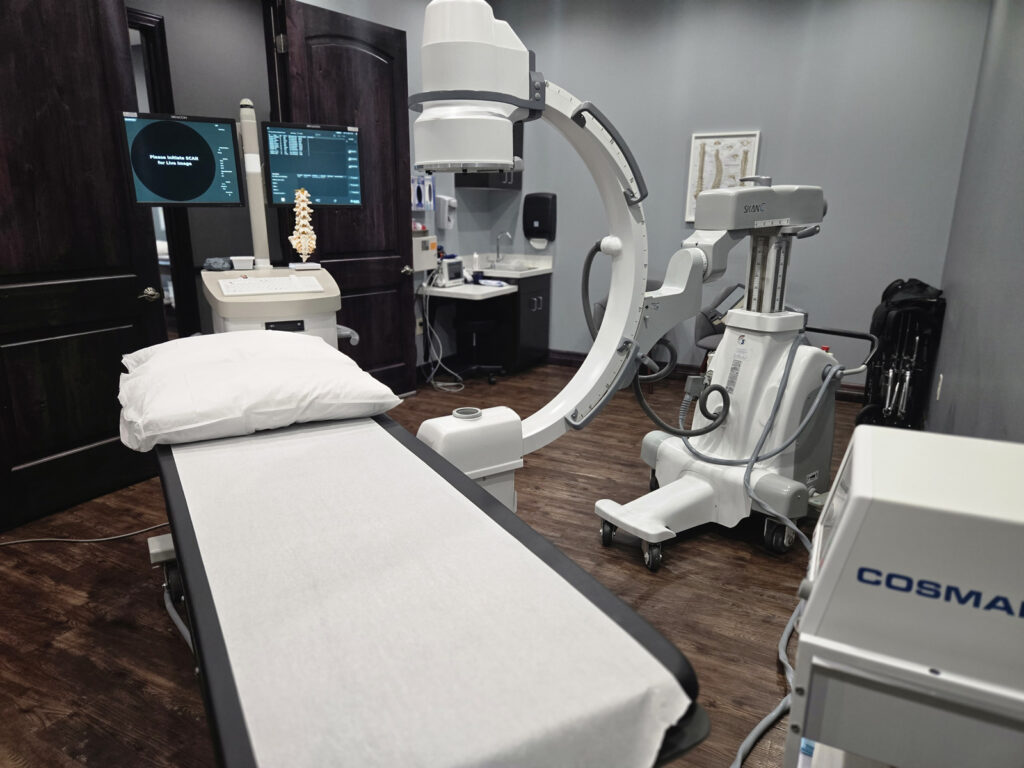Botox
Botox Injections for Pain Relief
Beyond Cosmetic: Botox as a Proven Pain Treatment
Botox® is widely recognized for its cosmetic benefits, but it also plays an important role in pain management. At Williamson Pain Institute, we use Botox injections to relax overactive muscles and reduce nerve irritation that can trigger chronic pain. This safe, minimally invasive procedure can provide lasting relief for conditions that haven’t improved with other treatments.
What Is Botox for Pain?
Botox (onabotulinumtoxinA) is a purified protein that temporarily relaxes targeted muscles. By calming excessive muscle activity and reducing nerve signaling, Botox can ease pain caused by muscle tension, spasms, or certain nerve-related conditions.
Botox is commonly used for:
- Chronic migraines and tension headaches
- Neck and shoulder pain related to muscle spasms
- Myofascial pain syndromes
- Spasticity from neurological conditions
- Jaw pain/TMJ disorders

How Pain Develops in These Conditions
Chronic pain often develops when muscles stay tight for long periods or when irritated nerves continually send pain signals to the brain. Over time, this tension and irritation can create a cycle of pain, stiffness, and reduced mobility. Botox interrupts this cycle by relaxing muscles and decreasing abnormal nerve activity.
Why It Helps
When muscles stay tight or nerves continually fire, pain can become persistent. By relaxing overactive muscles and calming nerve activity at the injection site, Botox interrupts the pain cycle so you can move more comfortably.
Good To Know
- More than cosmetic: Botox is FDA‑approved for chronic migraine and widely used in pain medicine.
- Gradual relief: Improvement usually starts in 7–14 days; full effect in ~4 weeks.
- Lasting benefits: Results commonly last 3–4 months; repeat treatments maintain relief.
- Quick visit: Most sessions take under 30 minutes with no downtime.
How The Procedure Works
Botox injections are performed in the office and typically take less than 30 minutes.
1) Preparation
The treatment area is cleaned, and a local anesthetic may be applied for comfort.2) Precise Injection
Using a small needle, Botox is injected into the specific muscles or regions causing pain.3) Recovery & Results
No downtime. Relief builds over 7–14 days with full effect around 4 weeks and can last 3–4 months.Benefits of Botox Injections for Pain
- Reduces muscle tension and spasms
- Relieves nerve-related pain and sensitivity
- Improves mobility and quality of life
- Minimally invasive, no downtime
- Relief can last up to 3 months or more
- May reduce the need for daily pain medications
Risks & Safety
Next Steps
If you struggle with chronic migraines, neck pain, or muscle-related pain that has not improved with other treatments, Botox injections may be a good option. Our team will carefully evaluate your symptoms, discuss your goals, and develop a personalized treatment plan.
Call Williamson Pain Institute today to schedule a consultation and learn if Botox for pain relief is right for you.
Insurance accepted. Most plans, including Medicare, cover hip injections when medically necessary. We’ll verify your benefits and guide next steps.

Your Questions Answered
Botox works by relaxing overactive muscles and reducing abnormal nerve signals. This helps break the cycle of pain, stiffness, and irritation.
Botox is commonly used for chronic migraines, neck and shoulder pain, myofascial pain syndromes, TMJ-related jaw pain, and certain types of muscle spasticity.
Most patients report only mild discomfort — similar to a quick pinch. A very fine needle is used, and the procedure is usually well tolerated.
Most sessions take less than 30 minutes, and you can return to your normal activities right away.
Relief usually begins within 7–14 days. The full effect is often noticeable around 4 weeks after treatment.
Results typically last 3–4 months. Repeat treatments can help maintain long-term relief.
Possible side effects include mild soreness, bruising, or temporary weakness in nearby muscles. Serious complications are rare when performed by an experienced physician.
Yes. Botox has been used for decades in both cosmetic and medical treatments. Millions of injections are performed safely each year.
